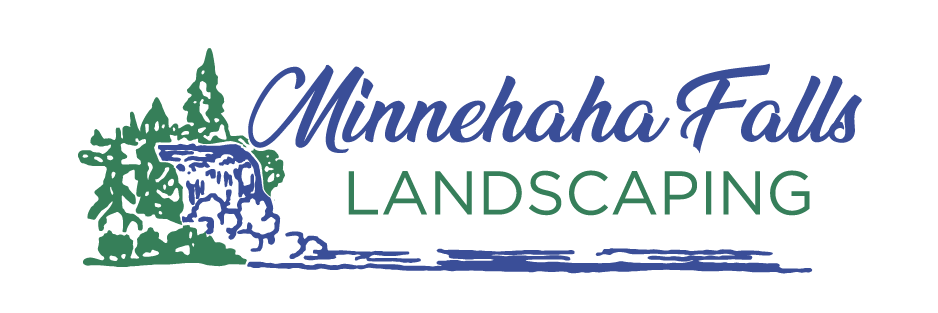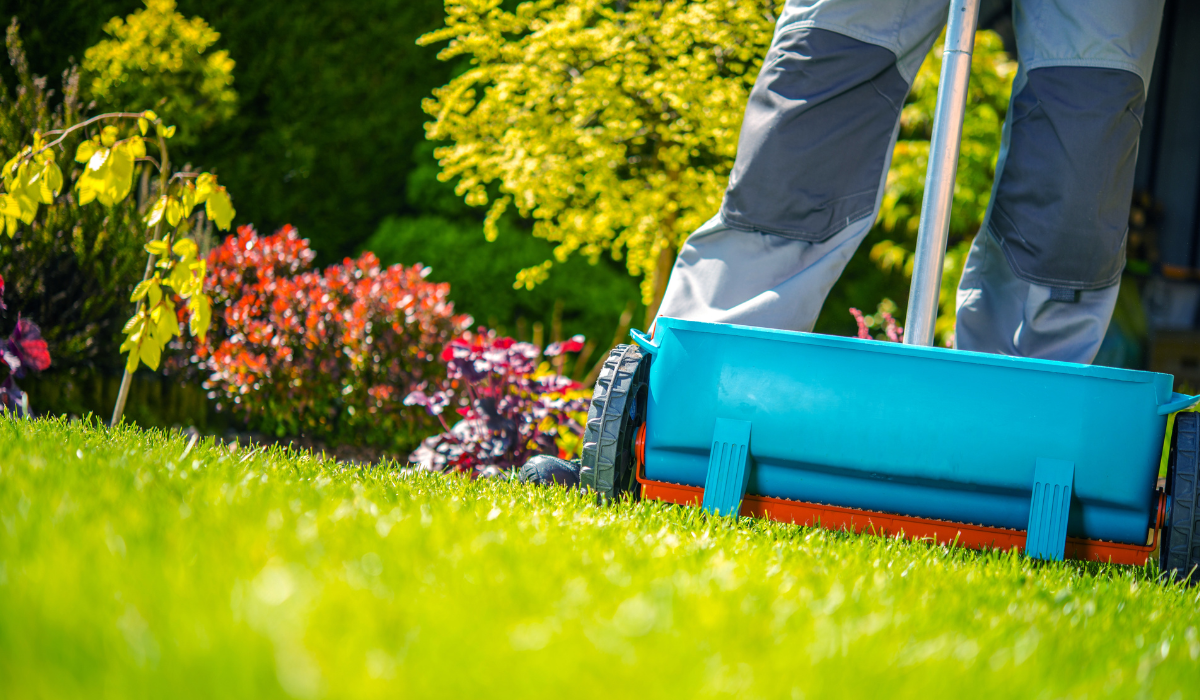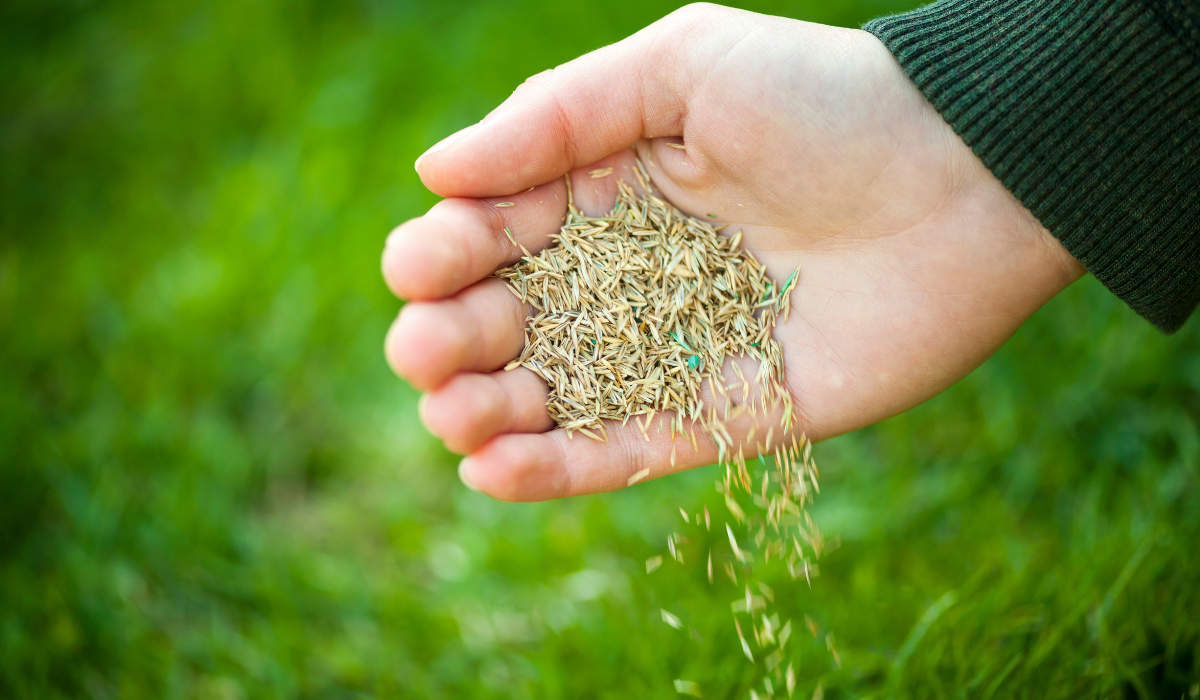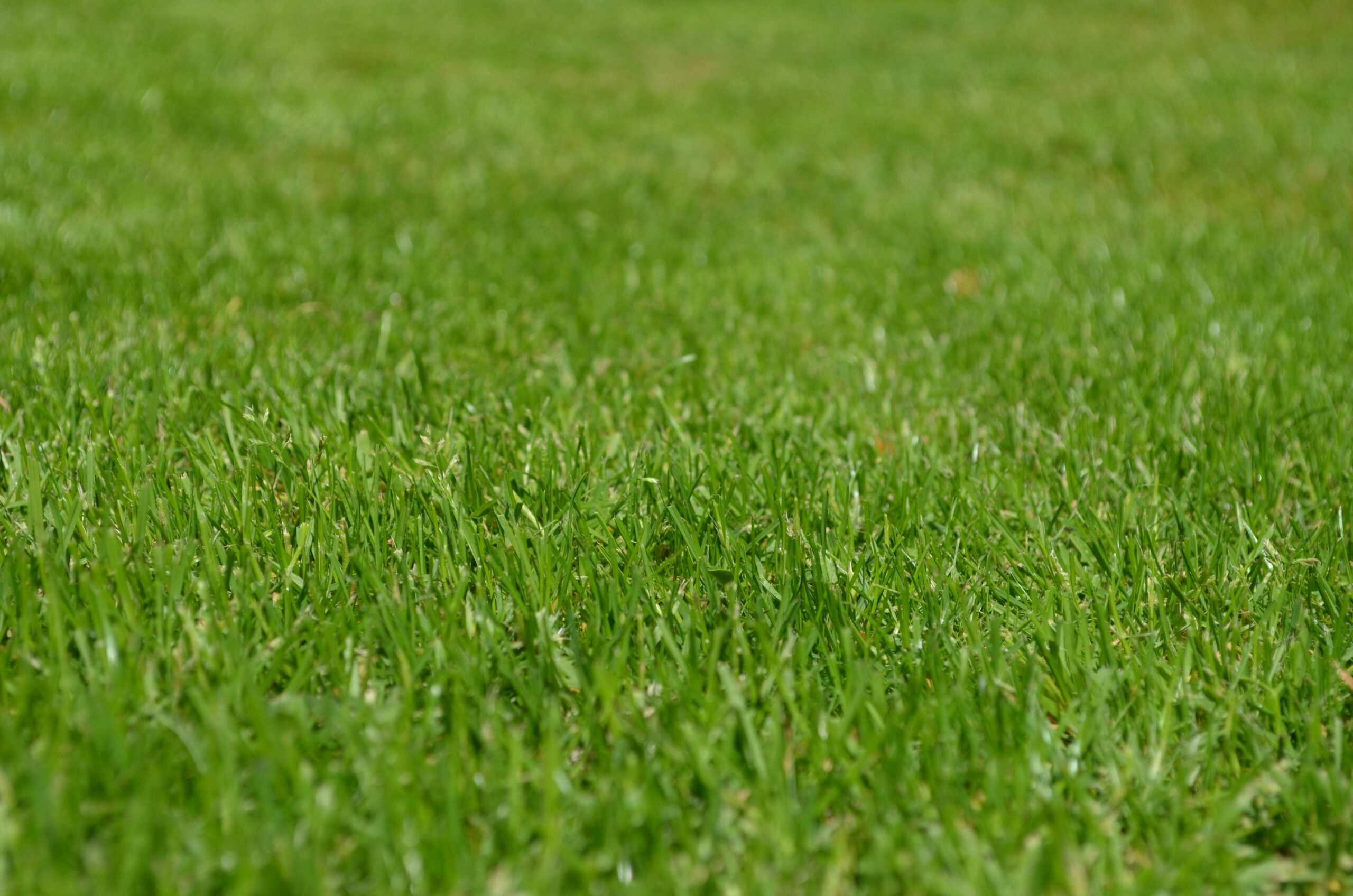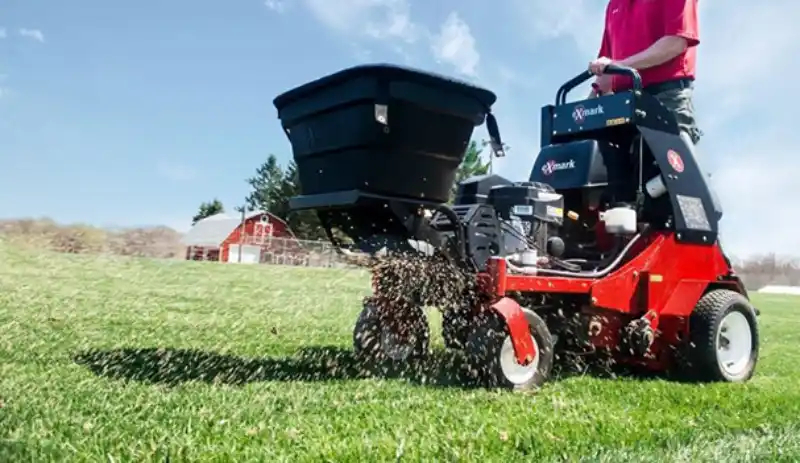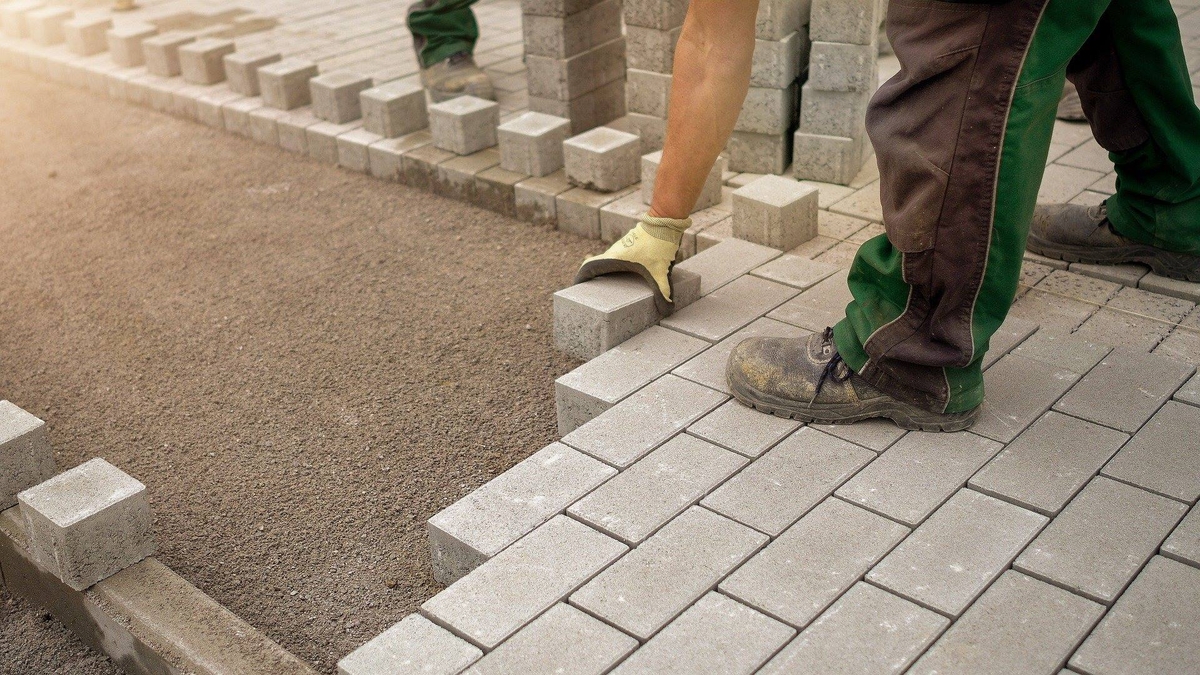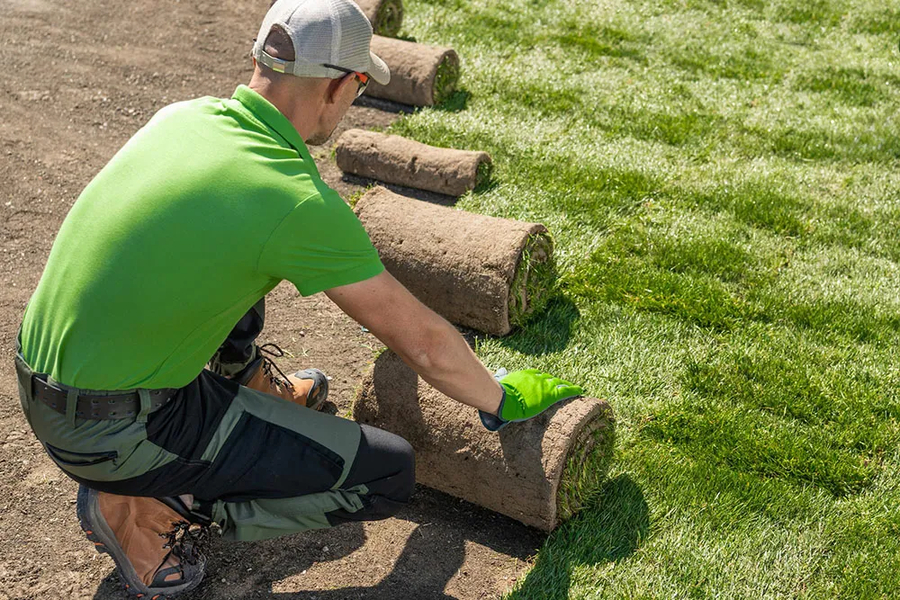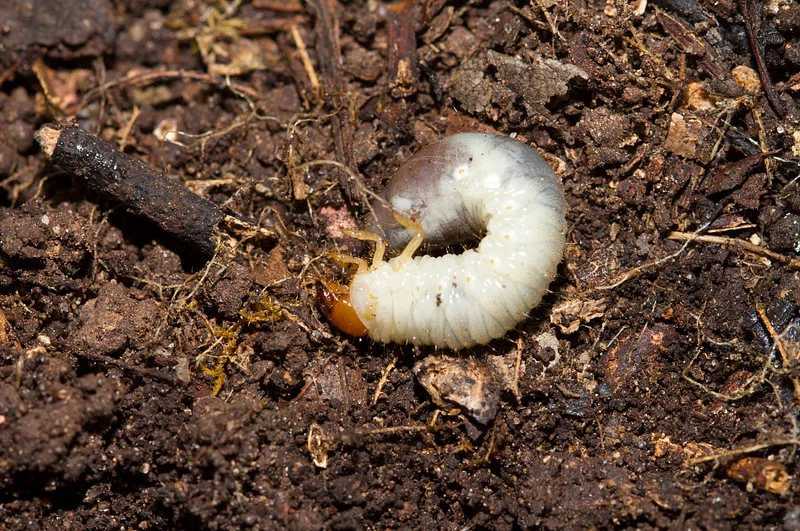Fall lawn care, clean up, and overseeding in Minnesota and the upper Midwest are essential to maintaining luscious, organic lawns and healthy soil conditions year-round.
Whether you’re a DIYer and plan to tackle this project yourself (or if you value your free time and would like our team of experts to take care of it), our comprehensive fall lawncare guide will help you understand the fundamentals of lawn fertilization and seeding. Let’s dive in!
Fall Lawn Fertilizer: Minnesota and Upper Midwest
In Minnesota and the upper Midwest, the best time to apply fertilizer to your lawn is in the fall as soil temperatures cool and soil microbiology becomes most active. We recommend two applications, once between August 15th and September 15th, and once between September 15th and October 15th.
We recommend using organic, mostly non-water soluble lawn fertilizers for environmental safety, optimal soil health, nutrient provision, and plant growth.
Is Fertilizing Your Lawn Necessary?
Yes, absolutely! Lawns use a lot of nutrients to regrow turf that we mow and walk on. Feeding vibrant soil microbiology with organic fertilizers will feed and protect turf roots. Here are some reasons why fertilizing your lawn is an important aspect of fall lawn care.
- It makes lawns less prone to weeds and more disease-resistant.
- You can decrease water runoff.
- Your turf will be thicker and grow a deeper root system.
- It will prepare the grass for spring regrowth and reduce maintenance.
When Not to Fertilize
There are a few conditions when it’s not ideal to fertilize your lawn.
1. Cold or frost: when the ground temperature is below 40°F, deep cold, frost, and snowy conditions can prevent your lawn from absorbing nutrients properly.
2. Drought: fertilizing during a drought can cause heat stress and cause your grass to burn.
3. Windy conditions: high winds can cause your fertilizer to blow away before the nutrients have been absorbed.
Next, we’ll cover the best order to care for your lawn, apply fertilizer, and seed.
Tips for Overseeding Lawn in Fall
In Minnesota and around Minneapolis, fall lawn overseeding is vital to maintaining healthy grass, enhancing your lawn’s color, and preparing it for harsh winter conditions.
If you are using non-water soluble organic fertilizers, you can fertilize, aerate, and seed all at the same time. We also make a special liquid compost extract that we spray right after seeding to promote beneficial fungi. Beneficial fungi grow alongside grass seedlings, providing the turf with up to 1,000 times more access to nutrients and water than it would otherwise have.
What is Overseeding?
Overseeding refers to the practice of spreading grass seed onto an existing lawn without tilling the soil or disturbing the turf.
You can begin overseeding around mid-August to mid-September to take full advantage of a potential long autumn where some seeds will sprout. Repeat again before October 20th to be sure some seeds are overwintering and ready to take advantage of spring conditions.
Use these overseeding techniques to help ensure your lawn thrives in a cold climate:
1. Choose your seed. If you are planning a standard organic lawn in cooler climates like Minnesota, it’s best to use a mixture of Kentucky Bluegrass, perennial rye, and Fine Fescue. Many of our clients are choosing bee lawn seed blends for their aeration and overseeding. Bee lawns offer drought resistance, turf walkability, and habitat for dozens of species of pollinators!
2. Aerate. Using a core aerator on your lawn can allow more oxygen and nutrients to enter the soil through the tiny holes created. Seed immediately after you aerate the lawn. Some aerators have built-in seeders.
3. Apply your lawn fertilizer organic fertilizer can be spread at the same time as your seeding. Make sure to use mostly non-water soluble organic fertilizers.
4. Seed immediately after aeration. Seed once in the late summer between August 15th and September 15th and once again in the fall between September 15th and October 15th. Using a broadcast spreader will help distribute your grass evenly and reduce seed costs.
5. Water consistently to keep your soil moist, but don’t overwater your lawn. If you see standing water or pools, you’re likely overwatering. Ease up on watering when daytime temps fall into the low 60s.
Are you considering going the extra mile and planting flowers or vegetables in your garden this fall? Check out our fall garden guide for more tips.
Busy schedule? Leaf it to the Experts.
At Minnehaha Falls Landscaping, our commitment to safe and sustainable lawn care practices is at the heart of what we do. Our friendly team of experts can take the burden of lawn maintenance off your hands so you can focus on what’s important to you.
Curious about our work? See what our clients are saying.
Why Minnesotans choose Minnehaha Falls Landscaping:
Here are just a few reasons why Minneapolis and Minnesota residents choose Minnehaha Falls Landscaping:
Organic and eco-friendly materials
Decades of experience
Friendly and informed staff
Pet, child, and bee-friendly lawn care practices
Get in touch with us using the form below!
